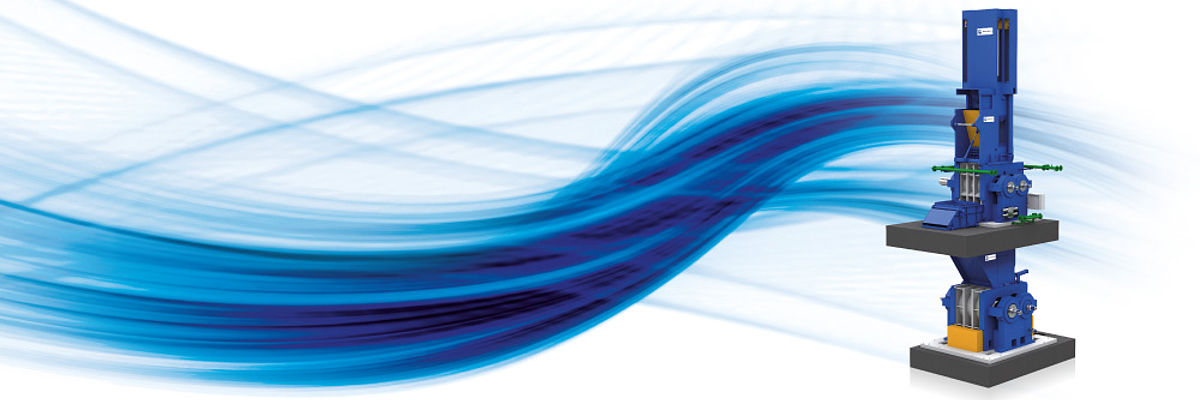The widespread success of tandem technology began with an idea from Dr Julius Peter (Continental AG). He discovered that separating the two main tasks in the rubber mixing process – dispersion and distribution – carried a number of clear advantages. The tandem process was born out of this idea and was patented by Peter as long ago as 1978. Tandem technology involves connecting two machines in series – or more precisely, on top of one another, with each machine optimised to perform one of the two mixing tasks.
The first machine is responsible for dispersion, which means breaking down mixture components such as the fillers. Distribution takes place in the second machine (or stage), which involves achieving the most homogeneous mix within the rubber compound. If reactive compounds are processed, the chemical reaction also chiefly takes place in this machine. Both machines are connected in series so that they function together as one continuous mixing process. The ‘premixed’ material from the first stage is not temporarily stored, but immediately moved on to the second stage, which performs the concluding distribution task while the next batch of material is being premixed in the first stage. This perfectly synchronised, permanent two-stage process signifies a quantum leap in mixing technology. It soon became clear that it would not only result in enormous benefits in relation to the silica compounds used for manufacturing tyres – an area of development on which there is currently a great deal of focus – but also in relation to the numerous other mixing requirements such as remill and carbon black manufacturing stages.
Above all, the temperature profile which is absolutely essential for inducing the chemical reactions during the mixing process can be better controlled by separating the stages. Consequently, the properties and quality of the compound can be positively influenced. There is a further effect: by separating the tasks and concentrating on one at a time, and as a result of the relatively smaller compound weight in the larger lower machine, it can be operated at a higher speed. This improves the quality of the compound thanks to the higher gravitational forces and the greater number of times the compound is moved around.
Experience shows that a TANDEM mixer can improve the throughput rate by up to 25 per cent when working with carbon black compounds and even by up to 100 per cent with silica compounds. The resulting potential for cutting costs and increasing output is obvious. Depending on the mixing line, in an average-sized mixing room for tyre production (approx. 100,000 tonnes of rubber compound p.a.) this can soon add up to savings of almost one million euros per year.
The early decision taken by HF to focus on tandem technology and continue to optimise this process is paying dividends. The pioneering automation technology, the numerous, individually configurable applications and the exemplary global service network should also be mentioned. An increasing number of companies from the rubber and tyre industry clearly recognise the enormous benefits, because demand for the machines supplied by the HF MIXING GROUP is greater than ever.



